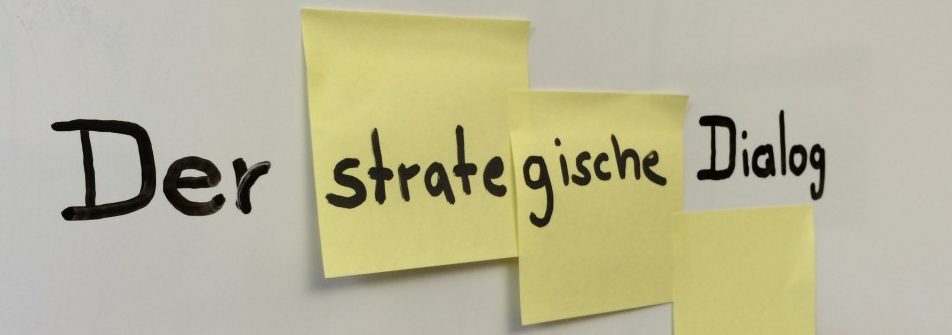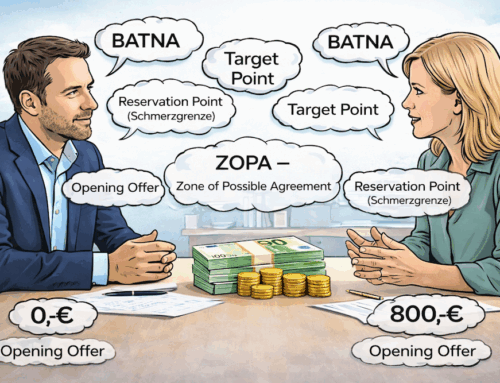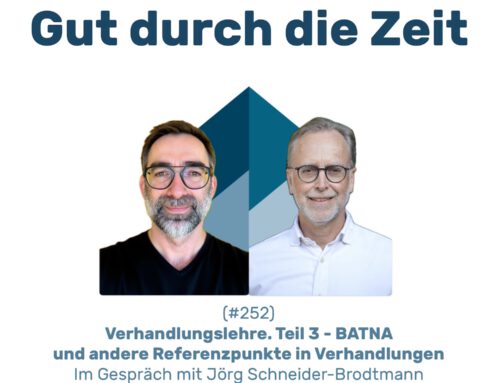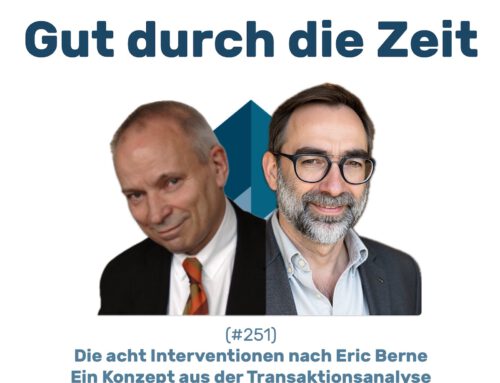Why agile leadership leads to strategic dialogues
Quite simply, and for a single reason:
Strategic dialogues provide the framework for all four basic principles of agile & lean management and leadership in agile & lean organisations.
Malte Foegen & Christian Kaczmarek have in their wonderfully designed and substantial book „Organisation in a digital age“ (2016) summarised the principles of agile leadership. They are reason enough to become essential.
Four principles of agile leadership
Agile leadership follows the four basic principles of Agile & Lean Management.
- Develop yourself
- Others develop
- Continuous improvement
- Creating a common direction.
At first that sounds abstract, remote, intangible… not at all „operational“ – like this absolute toollos.
Principles are not tools.
Agility leads to the idea that management is fast and …well, agile. This is misleading. Rather, it requires a great deal of effort, an intensive focus on and dedication to team members. Connecting approaches are needed instead of demarcation through instructions. Nothing can be done „quickly, quickly“, otherwise it will just be rubbish.
Agile leadership is not quick, but only (humanly) intensive.
This no longer has anything to do with the heroes at the top, but rather with the central figures in the midst of like-minded people who act on an equal footing.
1. develop yourself
…means presenting yourself to the world as an outcast. You are standing there and can't help it, you are unique, but by no means well-behaved. You have a new understanding of the world and know that you are getting to know yourself and the world right here and now.
Developing a constant willingness to learn is not easy. It also needs to be learnt. It doesn't mean greeting the groundhog every day. You are not Sisyphus.
Understanding and marvelling at the world again and again does not mean repeating yesterday's approach every day with yesterday's mental attitude„. It means looking for new solutions today and questioning what worked yesterday and would still work today.
Don't act functionally, but strategically and therefore innovatively.
That means agile, strategically orientated self-management.
2. coaching and developing others
This principle requires a system-theoretical or radically constructivist viewin the spirit of Heinz von Foerster. In the further development of others, there is a fundamental difference that distinguishes the coach of the classical mould from the coach of the system-theoretical mould. The former has a whistle and knows what the pupil should and should not do. Accordingly, the whistle is (usually) blown.
The agile manager asks questionsdirect, connecting, circular, goal-orientated but open-ended questions, in short, with intelligent questions that have a developing effect. Asking questions does not mean playing dumb, but starting where the next step is.
A few directions lurk around every corner.
This is where Dialogues at eye level. There are no (predetermined) paths here, there is only walking, common steps that are strung together and convey stringency and meaning in an overall view.
In practice, this is not always easy for managers, especially emotionally, because Uncertainties about real dialogues belong to it. That is the price of creativity. Their arrival is not predetermined – and always remains a miracle.
3. continuous improvement
Here the Experience of Kaizen and unfold their Strength for the organisation. This is because leading team members involves the „transfer“, the „hinge function“ to the organisation. In leading, managers also develop the organisation as a whole. This may be the case in small organisations, functional improvements show (Optimisations), but even more so in transformative measures, in disruptive innovations.
At best, these improvements relate to the following three areas.
- Improvement of production.
- Improvement of the products.
- Improvement/expansion of business models.
4. create a common orientation
Managers have Creating time-spacesin which the possibility of joint alignment is explored: What are we working on and how?
Every measure, every objective, every undertaking in the organisation serves the big picture, the shared vision, which is developed, clarified and refined through dialogue.
Aligning together means that Combining top-down actions with bottom-up movementsto organise themselves together and grasp the common goal.
This is precisely where the power for an Agile & Lean organisation rooted in strategic dialogues develops.
Strategic dialogues enable the development and concretisation of the vision and overall strategy, but also the development of (partial) missions and concrete measures.
The aim and meaningful power of strategic dialogues is that ultimately all focussed on the big pictureand know what they and the others are working on.
…and still a few tools for implementation.
What is needed very concrete and practicalto bring the four principles to life.
There should be a few hints, although there is a risk that the work will be done too early.
Communication and dialogue are a question of attitude, not technology.
Develop yourself requires motivation and activity and can be implemented in training courses, further training, coaching, mentoring programmes and collegial case consultations. All measures that provide the answer to a question are helpful:
Who else could you be and how else could you go about things?
Coaching and developing others requires inner freedom and a positive attitude. This is where the difference to traditional leadership styles becomes particularly clear (=crass!): Leadership tools are not deportation techniques, but dialogue openers.
Your open questions may stimulate and excite, but should never be asked without interest. You are the challenge of others.
Continuous improvement is the positive way of dealing with inner perfection drivers. But you don't improve in secret, in the changing rooms of life, but in the middle of the stage, in the middle of the play, while the theatre is running.
The others play the king anyway.
What does that mean? Acceptance, authority and agility cannot be demanded, but are granted and attributed to you.
Experiment, develop prototypes, act visibly, organise innovation days and ideas workshops for everyone. Take‘ an example from SIGA, ach what, take dozens of examples from SIGA.
Creating a common direction in connecting and dialogue-oriented deceleration spaces, spaces for reflection that promote creativity, in which the what, why, wherefore and how of cooperation ZEIT-RAUM finds.
Create modern campfires: places of communication that allow you to breathe deeply and slow down, that provide distance from the stresses and strains of the (all-)day, the journey travelled together („storytelling“) and that allow tomorrow to rise from within („imagination“).
Of course, these rooms used to be at nightfall, when the tigers and lions had a particularly easy time of it and only their own fire could guarantee safety.
Even today, this fear arises when we need to let go and give space to our own exhaustion. But this is the time to refuel, recharge your batteries and reflect: it is the TIME TO LEARN TOGETHER.
And here the circle closes: COMMON AIM is LEARNING and DEVELOPING and IMPROVING.





Leave A Comment